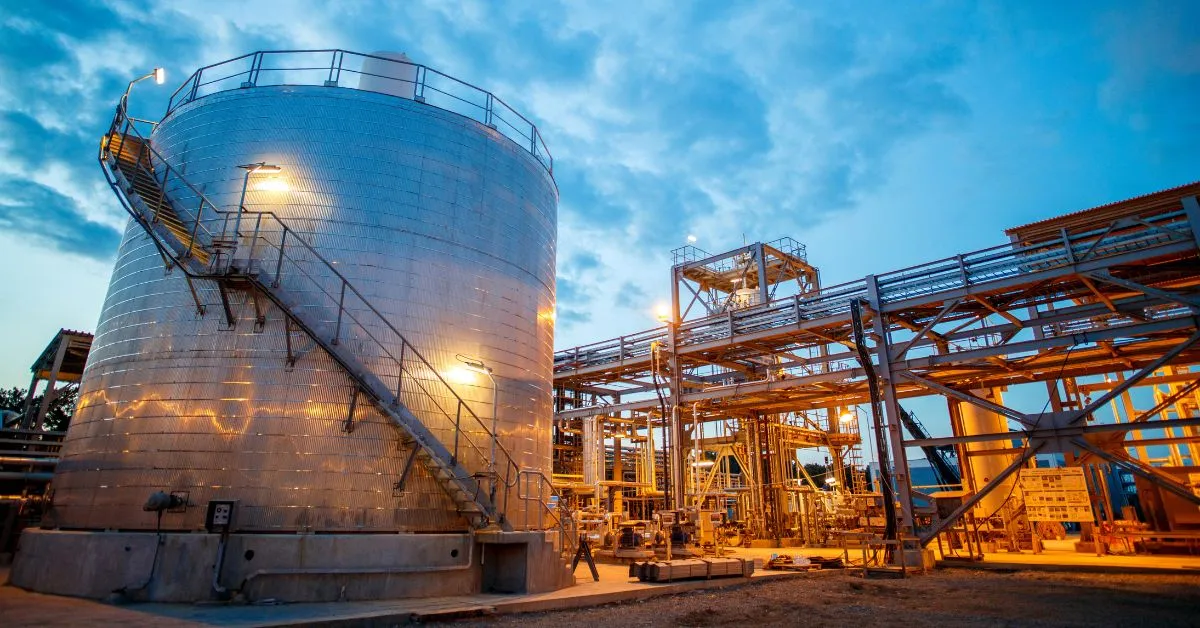Imagine a front-line operation that produces nearly zero defects. The shift is profound. Traditional rule-based automation followed static control logic; today’s intelligent optimization solutions ingest continuous sensor data, learn optimal setpoints independently, and execute adjustments in real time. The result of smart manufacturing implementation is measurable business value—higher uptime, reduced variability, and faster decision cycles that grow profits even under volatile feedstock and energy prices.
This article reveals exactly how smart manufacturing delivers these gains, which KPIs matter most, and where to begin capturing the same competitive edge.
What Is AI-Powered Smart Manufacturing?
Smart manufacturing connects plant equipment, streaming sensors, and cloud analytics through advanced algorithms. Machine learning techniques analyze plant-wide data to detect variance, learn optimal operating windows, and automatically adjust setpoints—creating self-optimizing systems that adapt without manual intervention.
Traditional rule-based automation and classic advanced process control rely on static equations and periodic tuning. Modern intelligent systems—powered by Closed Loop AI Optimization (AIO)—retrain continuously on historian and DCS data, adapting to changing feedstock quality, environmental conditions, and equipment constraints in real-time.
AI can deliver gains of 20% to 30% in productivity, speed to market, and revenue through incremental value at scale. Reinforcement learning, computer vision, and other advanced techniques drive this momentum, with widespread adoption already evident across process industry leaders scaling these capabilities in front-line operations.
How AI Tightens Control and Speeds Decisions
Process industry leaders face a perfect storm of growing process complexity, retiring domain experts, and volatile feedstock costs. Intelligent optimization solutions turn that volatility into opportunity by closing decision loops that once took hours—or days—in a matter of seconds.
Real-time data analysis and predictive analytics comb through thousands of sensor readings every minute, flagging drift before it becomes extended downtime.
Computer vision systems inspect every unit as it leaves the line, delivering hyper-consistent quality control that tightens tolerances and slashes non-prime giveaway beyond what traditional sampling achieves. Robotics with integrated intelligence takes optimization further by nudging set-points autonomously.
Together, these applications compress decision cycles, giving operators real-time action while freeing them to tackle higher-value constraints like energy balancing and feed optimization, turning variability into velocity across the entire system.
Human-AI Collaboration & Workforce Transformation
When intelligent systems move from pilot to daily operations, your people feel the impact first. Operator assistance tools display real-time action suggestions directly on control-room screens or AR headsets, while training bots walk new hires through start-up and shutdown sequences. Instead of watching trend charts for anomalies, your team spends more time optimizing yields and solving process constraints.
This shift creates entirely new career paths. Digital champions bridge operations and data engineering, specialists investigate anomalous events across complex systems, and algorithm monitors oversee adaptive models while validating set-point changes.
The question isn’t displacement; it’s reskilling. Skill gaps around data literacy and OT-IT integration still rank among the top obstacles to scaling smart manufacturing, yet plants that invest in continuous upskilling programs and cross-functional teams report higher adoption and faster ROI.
By letting advanced systems take over repetitive monitoring, you give seasoned operators the bandwidth to mentor peers, fine-tune procedures, and drive more sustainable operations.
Roadblocks & Myths—And How to Beat Them
You’ll likely hear four objections when you float an intelligent optimization project to finance, IT, or the control room. First is cost. Instead of a plant-wide overhaul, focus on a proof-of-value pilot targeting one high-margin unit.
The second hurdle is the “black-box” myth. Modern smart manufacturing solutions ship with model explainers that show the exact variables driving each recommendation, and operators can override any set-point at will. That transparency builds trust quickly.
Third, data silos and quality issues remain real constraints, yet advanced algorithms ingest signals from existing historians, DCS, and cloud ERP with minimal re-tagging—closing the gap between systems.
Workforce disruption rounds out the concerns. Companies should meet this head-on with retraining programs that upskill technicians into digital specialists, proving that intelligent systems augment expertise rather than replace it. With a phased rollout and the right partner, each of these constraints becomes a stepping-stone toward more efficient, consistent, and higher volumes of production.
The Next Leap: Closed Loop AI Optimization
Today’s process industry leaders face increasing complexity—volatile feedstock prices, equipment constraints, and the challenge of maintaining consistent performance across shifting operating conditions. Closed Loop AI Optimization addresses these constraints with a data-first approach that trains on simulated plant-years of operating scenarios, creating pre-solved decision entities ready for real-time action.
Unlike traditional optimization systems that merely suggest set-point adjustments, advanced solutions write setpoints directly to the DCS, closing the loop between analysis and control. The models refresh continuously with live plant data, staying aligned with day-to-day constraints like feedstock swings or equipment fouling.
A reinforcement learning (RL) engine continually refines performance, while built-in safeguards maintain operator trust by explaining every control move before execution, thereby helping to drive high operator acceptance rates.
Sites adopting this approach report measurable improvements: sharper blend control, shorter cycle times, and multi-million-dollar annual margin gains. The technology represents a fundamental shift from advisory systems to autonomous optimization, redefining what peak performance looks like in front-line operations.
Where Plant Leaders Can Start
You don’t need a massive capital investment to see traction from smart manufacturing. Start by focusing on the fundamentals, then scale successes across front-line operations.
- Run a data-readiness audit to confirm historians, sensor fidelity, and the IT/OT network can stream continuous data into a unified platform.
- Choose a high-value pilot such as crude-unit heat integration, compressor energy use, or a renewable diesel unit optimization project where improvements deliver measurable results.
- Form a cross-functional team of operations, process engineering, and IT security to embed expertise in every decision.
Enabling technologies like digital twins, cloud ERP, and intelligent cybersecurity add resilience as you expand. Consider downloading a step-by-step guide or arranging an optimization workshop to accelerate your first win.
Build Your Autonomous Plant of the Future
Smart manufacturing transforms plants from reactive automation to self-optimizing systems that directly impact margins and efficiency. Process industry leaders no longer need to wait for these advances—they’re delivering measurable results today.
The shift from traditional control systems to intelligent optimization represents more than a technological upgrade; it’s a fundamental reimagining of how modern plants can achieve sustained competitive advantage through data-driven decision-making and autonomous operation.
To help you get started, Imubit offers a free AI Optimization Value Assessment customized to your plant’s operations. This no-risk evaluation uses your existing data to highlight specific opportunities for improvement in efficiency, throughput, and quality, building a concrete business case for transformation before any investment is made.
For manufacturers ready to embrace the future, smart manufacturing offers a clear path to higher performance, lower costs, and greater agility. It’s not about replacing what works—it’s about enhancing it with intelligence.




